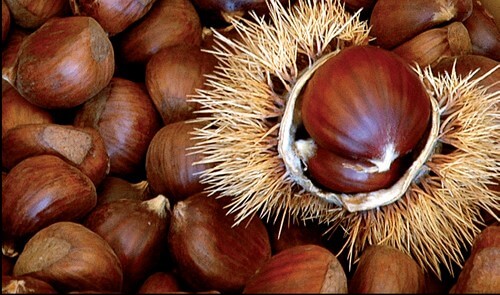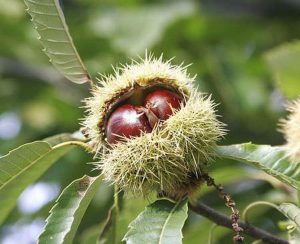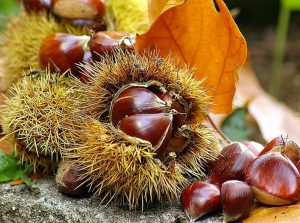Chestnut – Castanea Cultivar

At PRANDINI’S GARDEN NURSERY CENTRE you can find the Chestnut which belongs to the species castanea sativa, it is a tree which can reach a height of 20 – 25 metres, this shrub doesn’t generally find a place in our gardens because of its dimensions and is usually to be found in the woods.
TERRAIN
The chestnut needs an acid soil to grow well. Limestone and very compact soil is to be avoided. They prefer flat or slightly inclined areas where you can easily harvest the fruit.


FLORA AND FRUIT
Chestnuts are monoici trees, that is both the female and male flower bloom on the same tree, the male flowers are united in long yellow amentum while the female flowers sprout at the base of the male amentum, many varieties of the chestnut tend to be self pollinating, and so, it is good to have a few trees together. The fruit is achene, and is produced inside a semi woody wrapping, armed with thorns externally, commonly called hedgehogs, which open at the moment of the fruit maturing, which happens in Autumn. Inside each hedgehog we can find two or three chestnuts.
USE AND HEALTH GIVING PROPERTIES
The chestnut fruit is very filling, rich in fibre and minerals, useful in the case of anemia, psychophysical tiredness, thanks to its high calorific content (about 287 calories in 100 grams), and during pregnancy by virtue of its folic acid content which prevents malformation of the fetus.
The richness of the carbohydrate complexes renders it to have similar nutritional values to cereals. It is a valid alternative in the case of intolerance and complete cover of the glucose part of a meal.
The chestnut reduces cholesterol, re-balances the flora batterica. Among the vitamins contained in the chestnut, we find. Vitamin A, B1 (tiamine), B2 (riboflavin), B3 (niacin), B% B6 B9 (folic Acid), B12, C and D. among the aminoacidi, present in the chestnut we mention aspartic acid, glutammic acid, arginin, serina and treonina.. The chestnut also contains potassium (antiseptic, muscle strengthener and gland strengthener, phosphoro (calcific, it collaborate with the nervous cells) Sulphur, antiseptic,, disinfectant, it contributes to bone formation), sodium (useful to the digestion and assimilation), magnesium (it assists in the formation of the skeleton and acts to regenerate the nerves, calcium (bones, blood,nerves) chlora (bones teeth and tendons).
POTTING PRUNING AND CULTIVATION
Before thining of cutting for real you should predict the form of rearing for the young tree. In reality the choice is almost always targeted by the natural form. In the first few years therefore you should concentrate on the formation of a good base structure, equipping it if necessary with a support in a way to help its verticle growth. Afterwhich slowly, slowly, the plant grows a foliage and the cut branches pile up.
